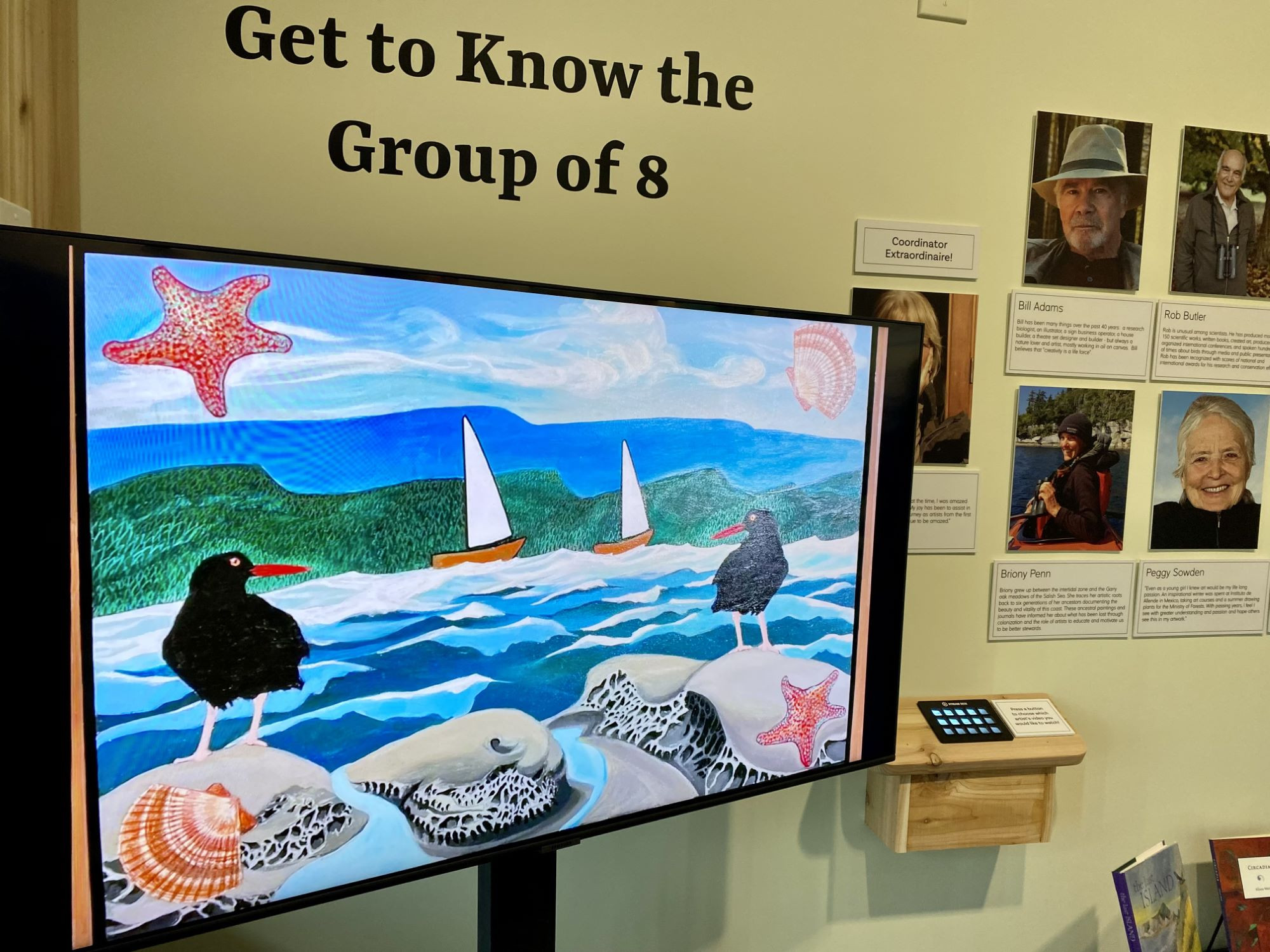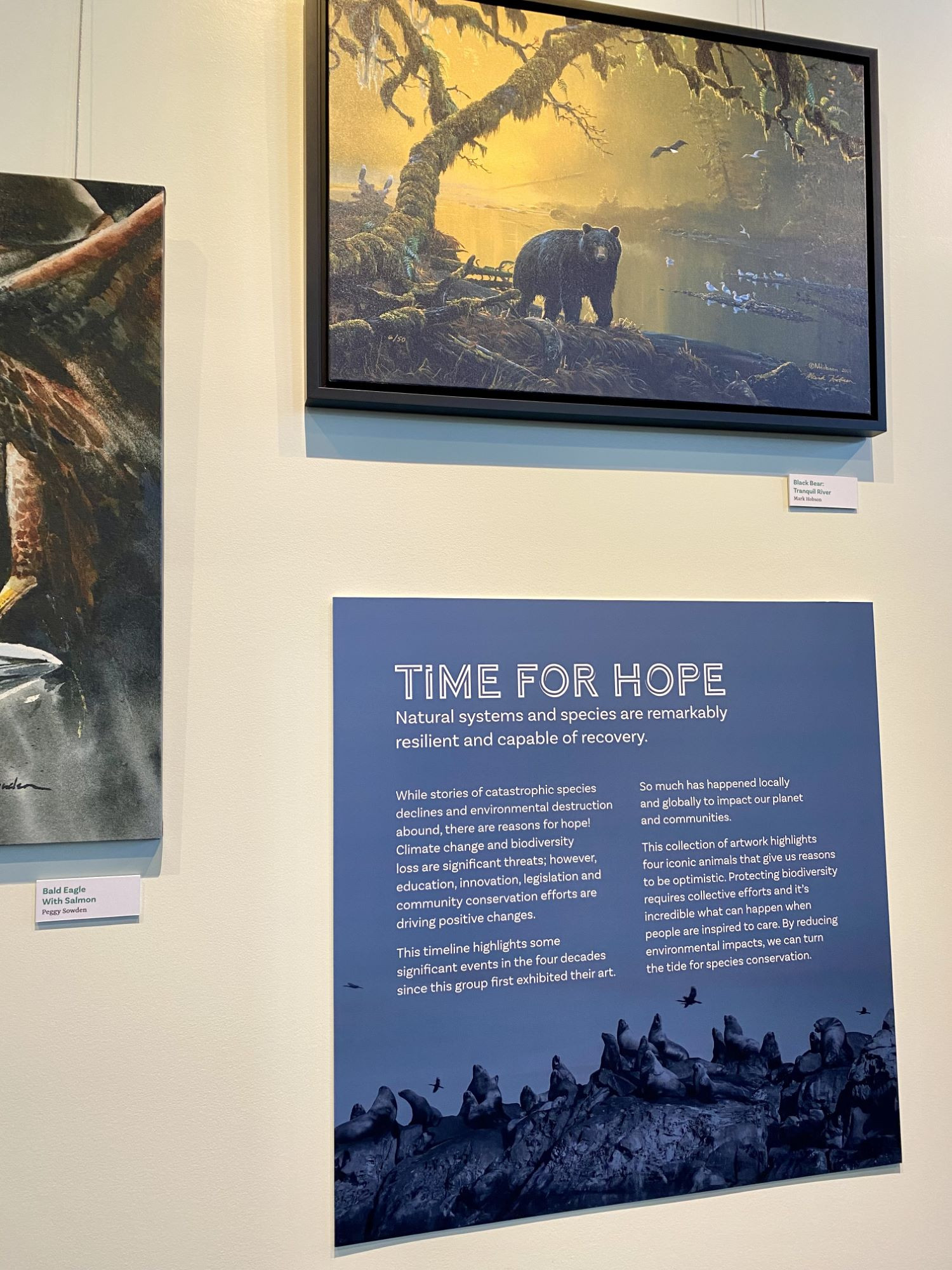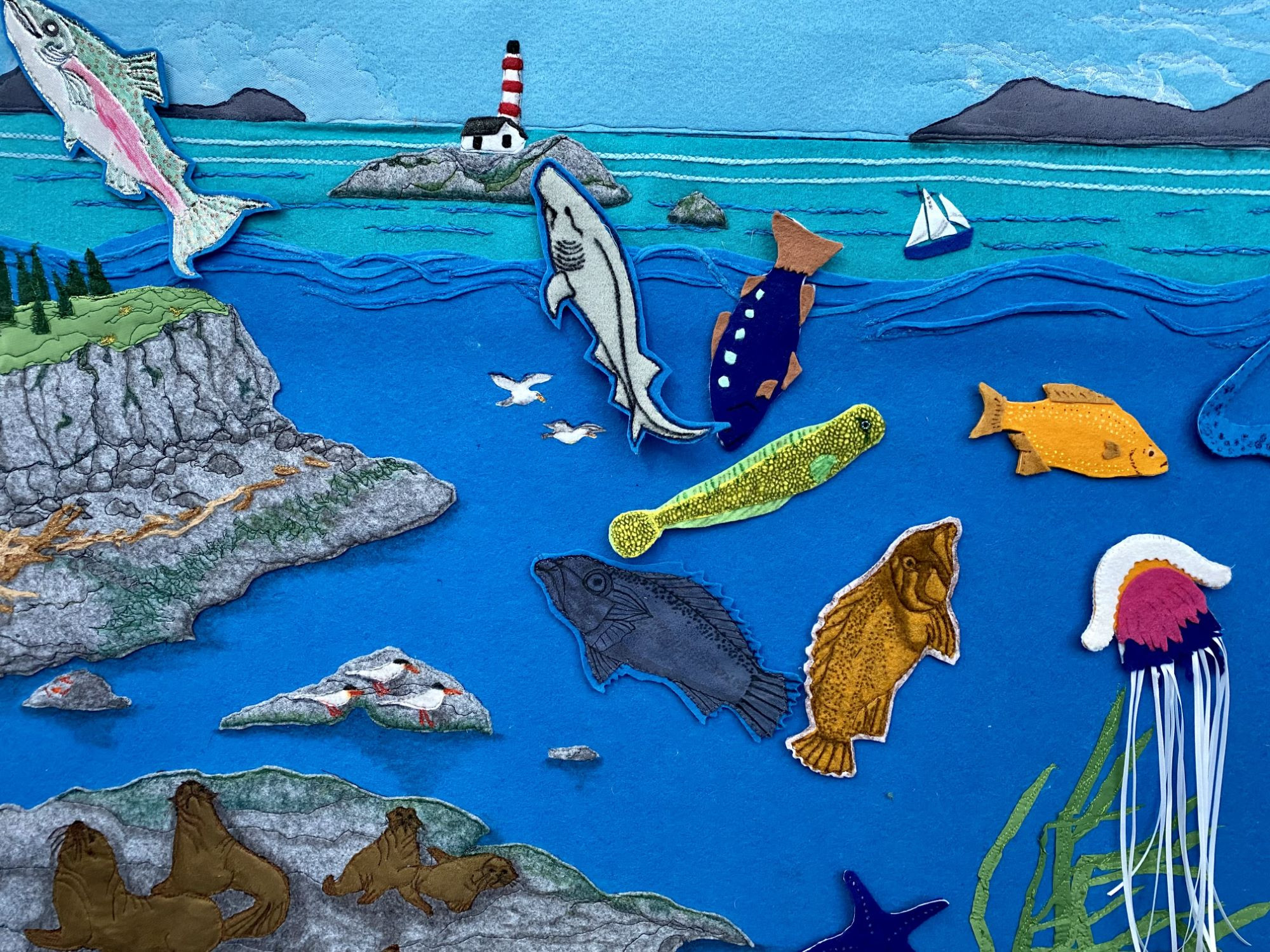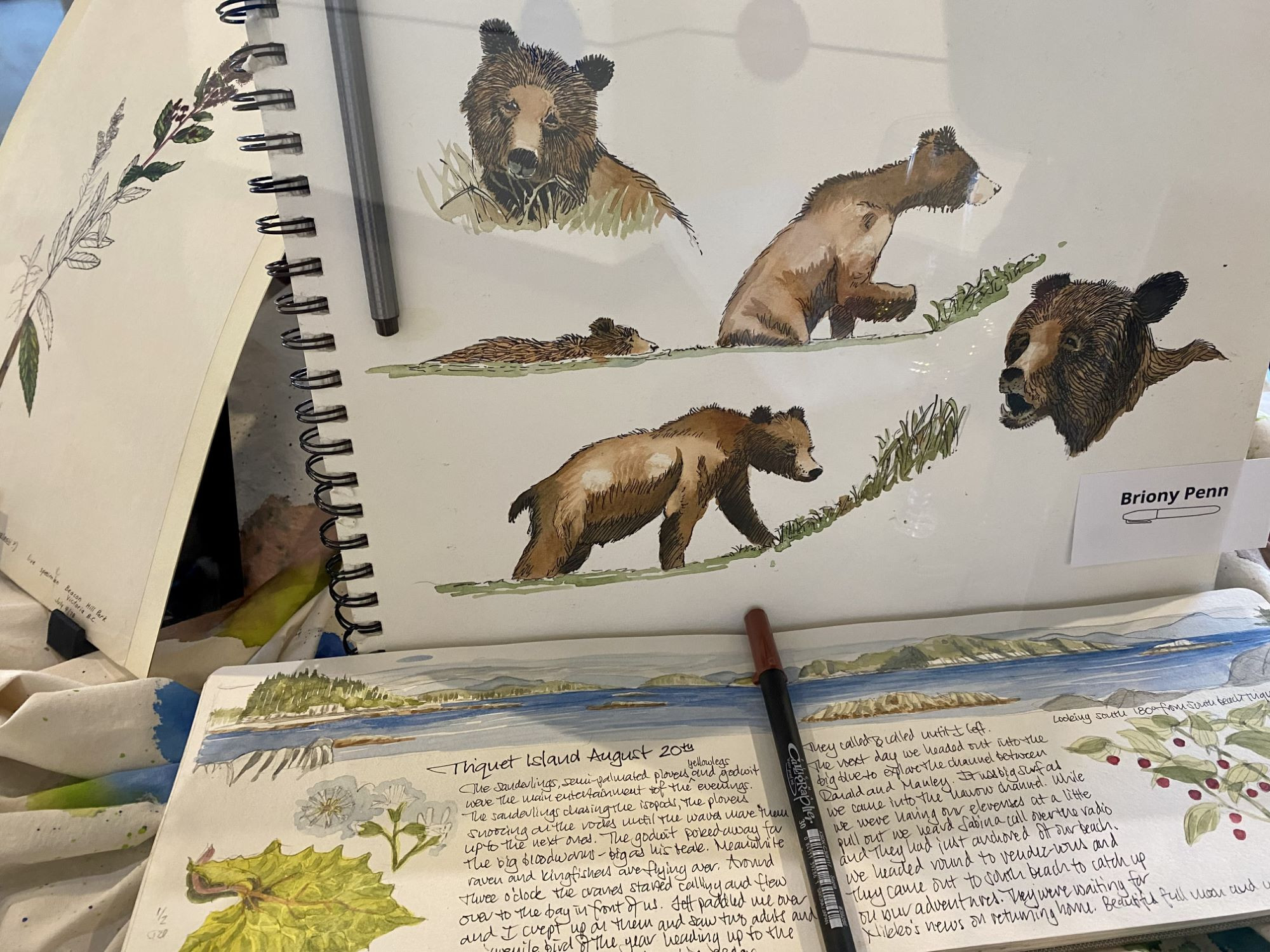
New Art Exhibit Raises Hope for the Salish Sea
“Where’s the hope?” is a question or sentiment that is unfortunately commonplace among seasoned and emerging conservation biologists, naturalists, and others in the conservation field the world over. Conservation despair, or a culture of hopelessness, has been explored in the scientific literature and in media, with scientists and members of the public questioning how we as practitioners, and as a society, “make hope routine when we regularly deal with so many hope-challenged scenarios?” (Swaisgood and Sheppard 2010). The question is urgent, as the ramifications of pervasive conservation pessimism are broad. Hopelessness among conservation biologists is affecting whom we recruit to the field of conservation science, and our collective ability to mobilize conservation action.
A new exhibit at the Shaw Center for the Salish Sea “Drawing Connections - 40 Years of Art and Hope for the Salish Sea” is one that inspires and encourages us all to connect with each other, to connect with nature on the regular, to be creative, and to carry hope for our shared waters. As noted on the Shaw Center website, the exhibit takes you on “a visual journey through ecological stories that have shaped [the Salish Sea] region over the past 40 years”. Through a range of displays, from featured art pieces to an interactive Young Ecologist Zone, the exhibit explores the intersections of art and science, all while teaching us about the importance of the coastal ecosystems of the Salish Sea and the species that inhabit them.


At the heart of the exhibit, along with the beloved Salish Sea, is the friendship that has endured between the artists and naturalists making up ‘the group of eight’. The exhibit features artwork by Mark Hobson, Bill Adams, Alison Watt, Briony Penn, Rob Butler, Peggy Frank, Anne Stewart, and Peggy Sowden. Forty years ago this group came together, united by a love for and fascination with the Salish Sea, and while the artists have gone different ways - in their lives and in their art - they have remained a source of inspiration for each other. Almost every year since their first art show together at the McPherson Playhouse in Victoria, BC, they have come together to display their art, showcasing the wonders of this coast to the general public in two (and sometimes three) dimensions. A variety of mediums were used to create the art on display at the Shaw Center exhibit, from mixed media acrylic (e.g., Alison Watt) to watercolour (e.g., Rob Butler, Peggy Sowden) to sculpture (e.g., Peggy Frank). It truly is a visual feast.

What inspired me most when it came to working with the artists to create this anniversary exhibit was the friendship and generosity of the artists. Through this friendship, they have maintained hope through the years, and this hope shines through their art, building hope in others.
~ Leah Thorpe, Director of Exhibits and Engagement, Shaw Center for the Salish Sea
A favourite part of the exhibit for me was a display focused on nature journaling. As noted in the exhibit “journalling is a great way to collect observations and form a deeper connection with your environment”. And anyone can do it! One way to alter attitudes and raise hope is to spend time in nature (Louv 2005, Webb 2005), as disconnection from nature can lead to pessimism. Nature journaling can be a great way to slow down and connect with your surroundings, to recharge, and to stave off feelings of despair. The collective encouragement from the artists featured in this exhibit - not just through their journaling but through all their creative endeavors to depict ‘this place’ - is palpable: spend time outdoors being creative, for both your and the greater good.

All in all, I recommend that anyone who needs a bit of “conservation enthusiasm” attend this exhibit. It’s a step towards a much needed reinvention in how we in the conservation field communicate with the public. And it is a journey that takes us from land to sea and back again, lifting the spirits in a time when we could all use a little hope.
My art comes from this place. I love this coast - its life, rhythm, seasons. I try to listen, to pass on what I see in two dimensions. I may be an amateur artist, but my love for this place is absolutely genuine.
~ Anne Stewart, naturalist and artist
By Romney McPhie
References
Swaisgood, Ronald R., and Sheppard, James K. (2010). The culture of conservation biologists: Show me the hope! BioScience 60(8): 626-630.
Louv, R. (2005). Last Child in the Woods: Saving our Children from Nature-deficit Disorder. Algonquin Books.
Webb, C.O. (2005). Engineering hope. Conservation Biology 19: 275-277.